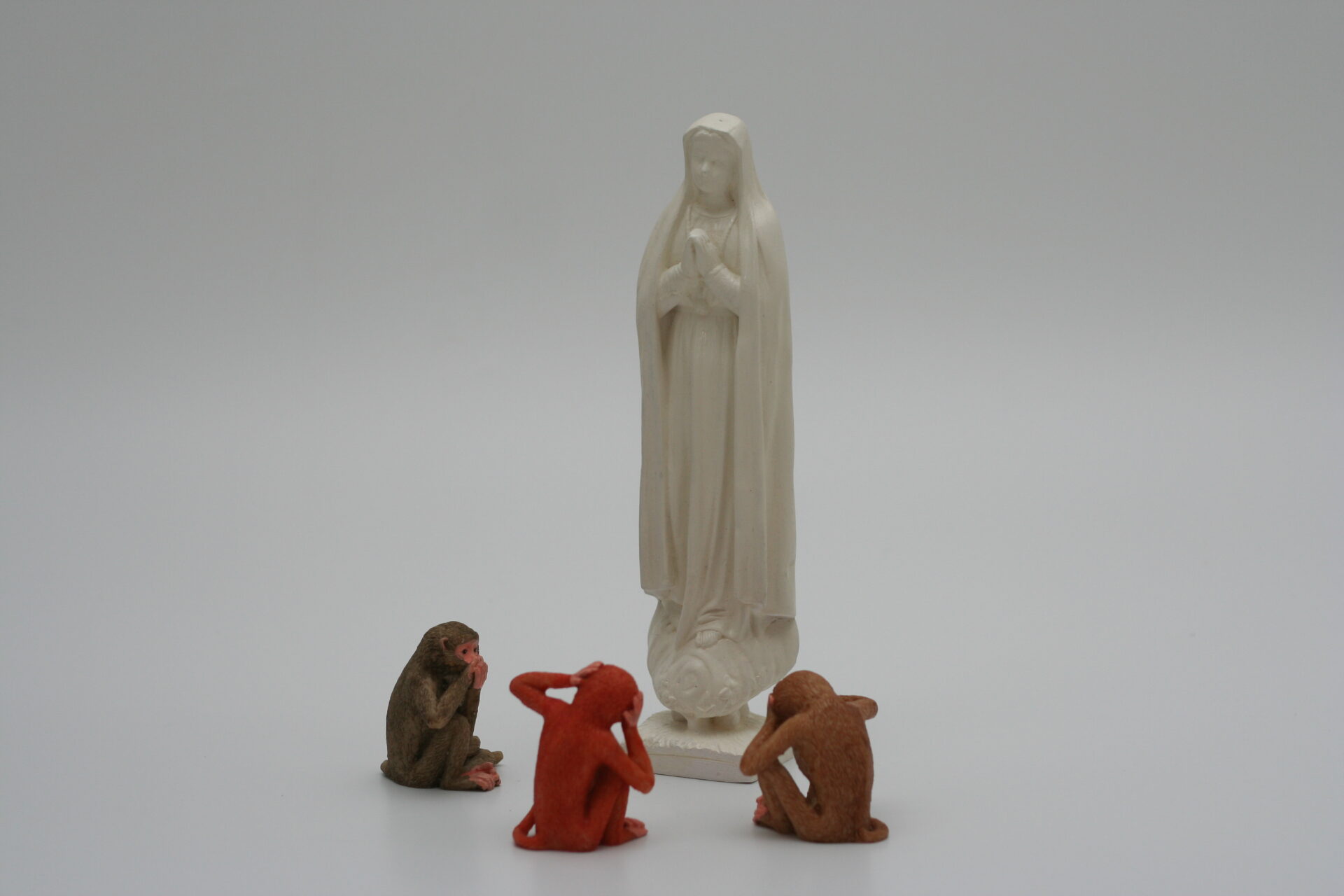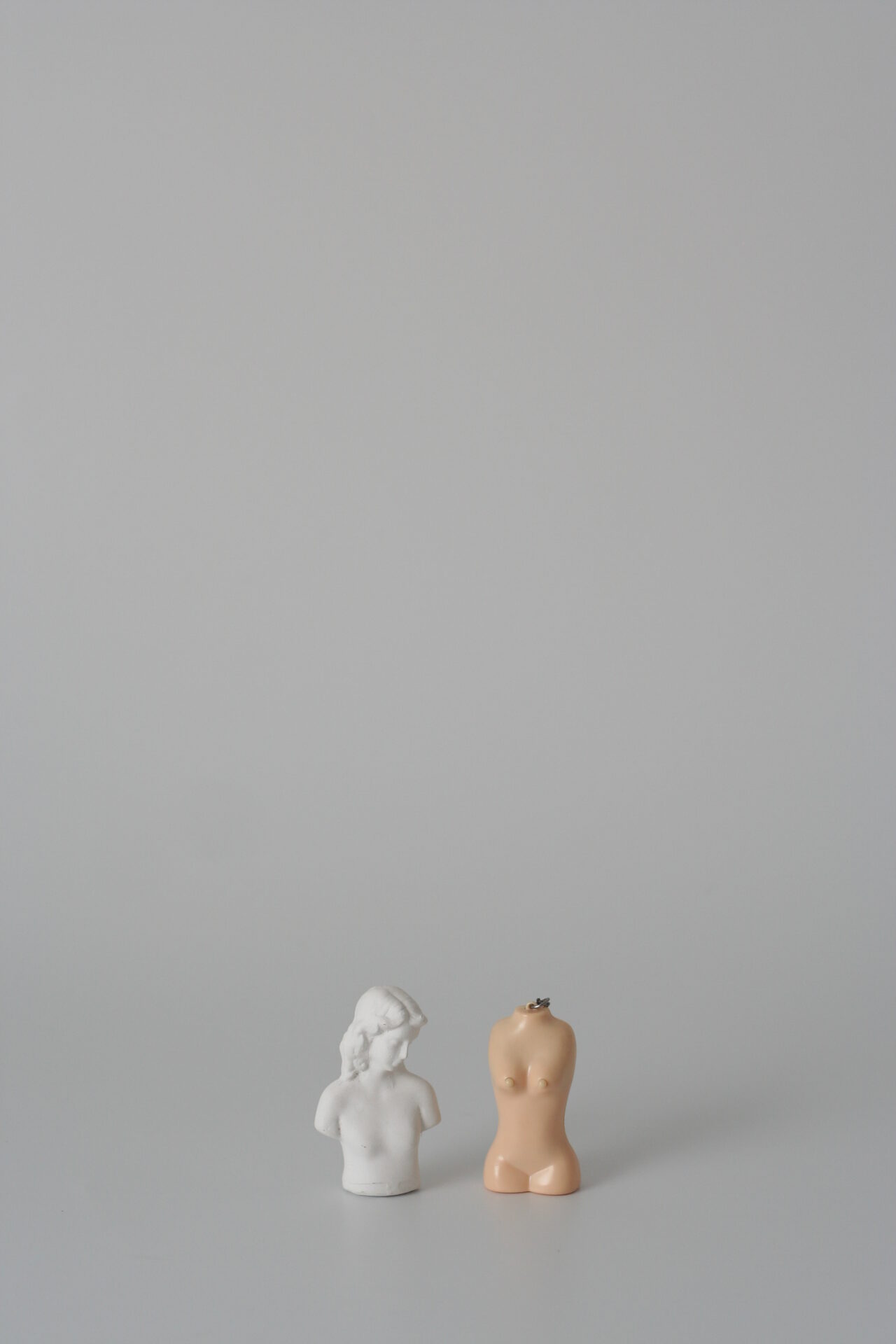
2010 | SOBRETUDO
Sobre invenções
Carlinhos Santos, Jornalista, mestre em Educação (UCS)
Altares de insignificâncias, reverência para banalidades. Cotidiano reinventado, relações, reordenações. Insubordinações ao relato racional, transitoriedades e transversalidades. Sandro Ka recoloca o trivial na condição de essencial. Prosaicas peças passíveis de novas percepções.
Quando o artista compõe estas coleções, surpreende, exigindo um novo olhar. Não é mais prosaico, nem menos visível este ordinário imagético.
Há tempos, a arte clama por narrativas inventivas, sem barroquismos, mas sabendo também deles, reinventando seu discurso. Penso na memória que cada peça evoca individualmente e, no contexto, solapa a lembrança, tramando nova rede de significados. Brincar de juntar coisiquinhas vira uma grande ousadia, numa estratégia contemporânea de amarrar simultaneidades e múltiplas interpretações . Sobre tudo, sobre as coisas e sobre o tempo.
Texto de apresentação da exposição Sobretudo, UCS, Caxias do Sul/RS, 2008.
The three mysteries
João Rickli, Antropólogo e professor (UFPR)
This picture portrays an artwork called “The three mysteries”, by Sandro Ka, a young artist who lives in Porto Alegre, in the southern part of Brazil. It is a good example of Sandro Ka’s technique, based mainly on the creative arrangement of small ordinary objects, such as toys, statues, religious images, cheap bibelots, etc.
In “The three mysteries”, a plaster image of the Virgin Mary is surrounded by small resin statues of the “three wise monkeys”, an image trope originated in the Japanese Koshin belief that became popular around the world. The arrangement combining the white Virgin and the colourful monkeys allows many interpretations, from the encounter between Western and Eastern popular religious icons to a critical view on the Catholic faith and the sometimes alienated attitude of its followers. More than interpreting Sandro Ka’s work, however, what interests us here is to take a look at the transition of one object he selected to compose his work – the plaster statue of the Virgin Mary – from an ordinary object into a piece of art. The contrast between the religious meanings inevitably attached to the object and its secular (and maybe even anti-religious) use will serve to point out some characteristics of the engagement between objects and people that are similar in the religious and the artistic fields.
The use of small images of saints is part of Roman Catholic culture all over the world. Putting them in small shrines in houses, offices, shops, cars and trucks are a common devotional practice for Catholic people. In Brazil, as well as in other Catholic countries, small shops selling those images and other religious items are very abundant, especially around churches and pilgrimage sites. While displayed in shops, these images of saints have an ambiguous status: on the one hand, they depict signs of what is considered sacred for a large number of people, parts of a system of belief that demand a respectful attitude; on the other hand, they are simple commodities, products that can be bought by any customer through a regular market transaction and that can be used to virtually any end, sacred or profane. This ambiguity allowed the Virgin Mary we see in the picture to be converted into an art object, instead of fulfilling its vocation to become a devotional object. The religious meanings it conveys were not activated through rituals and religious performances, but they were mobilised to offer a critical view on the religious world.
This somehow unexpected transition of the plaster Virgin Mary from commodity into part of Sandro Ka’s artwork subverts the object’s potential to sacredness, making explicit that, despite the religious meanings attached to the image, its action, effects and efficacy as a religious object depend on the relationship it establishes with people around it. Sandro Ka’s work reminds us that it is the engagement between people and objects that ultimately determines the character of objects and the way they act upon people. For instance, if this same statue of the Virgin Mary were bought by a devoted Catholic, it could have become a sacred object, provoking feelings of devotion and attracting prayers and offers.
At this point one question emerge: what are the differences and similarities between the engagement of people and objects in art and religion? A long list can be elaborated to answer this question. Here I will just start the list, pointing out two characteristics of the relationship between objects and people that are common to the artistic and the religious fields. First, there is an aura of venerability around both artistic and religious objects. They seem to demand some sort of respectful and reverent attitude from their devotees/observers. Seldom are they touched by people’s hands, and when they are, people are supposed to be extremely careful and respectful. They cannot be simply placed anywhere. Finding a proper location to accommodate them always demands some degree of attention and preparation. Without this atmosphere of reverence, objects such as the plaster statue of the Virgin Mary can easily lose the uniqueness associated to their religious and/or artistic character.
Second, in both domains the aesthetic qualities of the objects are an important component of the engagement with people’s sensibilities. Religious and/or artistic feelings are not just transferred to any object. Shape, texture, colour, weight, etc have to correspond somehow to people’s aesthetic aspirations and beliefs. That is why we talk about engagement, not simply about projection of human feelings on objects. The objects also act on human sensibilities through their sensitive qualities.
This short discussion of “The three Mysteries” aimed at showing how art and religion can promote complex types of engagement between human beings and objects. It depicted Sandro Ka’s work as an example of the ability shared by art and religion to transform ordinary things into extraordinary objects capable to counteract and influence people’s thoughts, emotions and lives.
